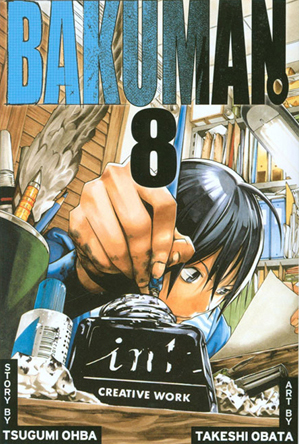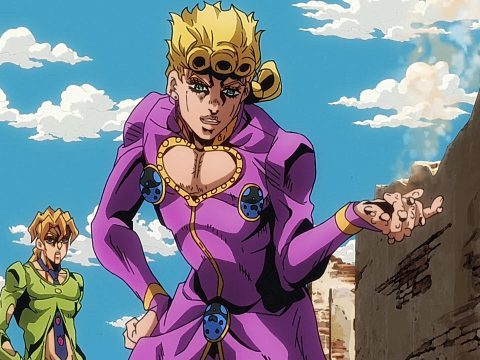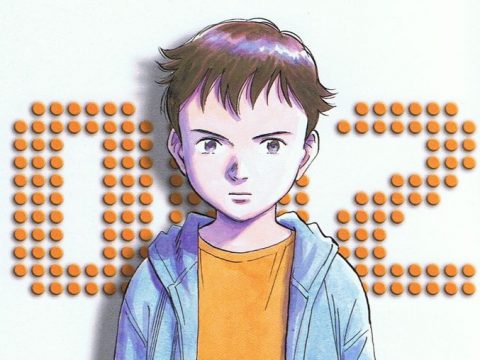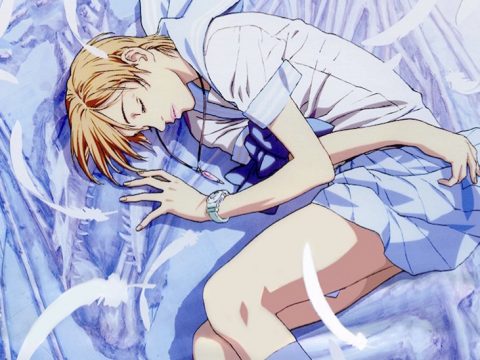 In the latest issue of Otaku USA magazine, Erin Finnegan touched on what makes Tsugumi Ohba and Takeshi Obata’s Bakuman such an enticing read. The creative team behind Death Note wastes no time sugar-coating the grueling process behind actually getting professional manga published in a legit magazine like Weekly Shonen Jump. Even with all the connections in the world, leads Moritaka Mashiro and Akito Takagi find the road a bumpy one, and things get even bumpier in volume 8, which has the duo attempting to launch their own gag manga.
In the latest issue of Otaku USA magazine, Erin Finnegan touched on what makes Tsugumi Ohba and Takeshi Obata’s Bakuman such an enticing read. The creative team behind Death Note wastes no time sugar-coating the grueling process behind actually getting professional manga published in a legit magazine like Weekly Shonen Jump. Even with all the connections in the world, leads Moritaka Mashiro and Akito Takagi find the road a bumpy one, and things get even bumpier in volume 8, which has the duo attempting to launch their own gag manga.
Straying from what they do best, story-driven manga, has peers doubting their ability to pull it off, but determination is the name of the game, and Mashiro and Takagi are as determined as ever. If only the tricky beast of their respective love lives wouldn’t keep rearing its hydra head, but that’s another facet that drives the narrative of Bakuman. The promise made between Mashiro and his destined girl Azuki—to marry once they’ve both fully realized their dreams—has always been a pretty cheesy romantic device, but Ohba and Obata are good enough at complicating things for the pair and the rest of the principal cast for the cornball setup to be forgiven.
While romance threatens to derail focus on what Mashiro and Takagi are striving toward, it all plays a part in the creation of manga, as well as some of the editorial drama behind the scenes. It’s still as fascinating as ever to see how reader polls and other aspects of anthology publication factor into a series’ success, and even whether or not it makes it past its initial pilot chapter. There’s a ton of risk involved, along with countless hours of lost time and (potential) money should a series never “make it.”
At times it seems as if everyone in the series is or is about to be hugely successful. When Takagi bumps into the very attractive Aoki Iwase—a meeting that serves as a catalyst for a rift in the relationship with his girlfriend, Kaya—she’s a published novelist and Subaru Rookie literature award winner. Still, Ohba and Obata manage to throw kinks into all good things in Bakuman, and it’s never a steady stream of victories without any conflict.
As Erin points out in her feature, Bakuman is most at home in its original manga format. While Death Note survived the transition to animation fairly well, Bakuman isn’t quite as suited to the screen. In manga form, it remains gripping and interesting, and could very well be the dose of reality many aspiring artists need. Not to say it’s discouraging, but would-be American creators of “manga” (which are, y’know, still just comics and should be treated as such) would do well to realize that, even beyond the language and continental barrier, many more hurdles exist in Japan’s industry.
But you don’t even have to be into creating manga to enjoy Bakuman. Catch up if you can for situations both fun and dramatic, and well-developed characters brought to near-animated life by the skill of Takeshi Obata’s pen. At only 8 volumes (as of December), it’s not as burdening an investment as some of the other English-pubbed Shonen Jump series, but is just as engaging.
Publisher: Viz Media
Story & Art: Tsugumi Ohba and Takeshi Obata
© 2008 by Tsugumi Ohba, Takeshi Obata




![Kaguya-Sama: Love Is War Volume 1 [Review] Kaguya-Sama: Love Is War Volume 1 [Review]](https://otakuusamagazine.com/wp-content/uploads/2018/03/169-loveiswar2-480x360.jpg)
![Dreamin’ Sun [Manga Review] Dreamin’ Sun [Manga Review]](https://otakuusamagazine.com/wp-content/uploads/2017/09/DREAMIN_SUN_1-interiors-48-480x360.jpg)

